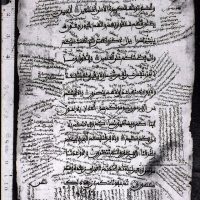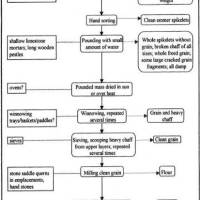
Pensive Saint (?) writing, with possibly a winged devil above him. Source: Birch-Early drawings and illuminations in the British Museum.
In prior times, hand-work was the method of recording, as depicted in the above plate showing a writing saint (or scholar). That plate, together with the following notes, are taken from a 19th Century book cataloging holdings in the British Museum. It is interesting to consider how times have changed, based on recent technological innovations:
Early Drawings and Illuminations. An Introduction to the Study of Illustrated Manuscripts; with a Dictionary of Subjects in the British Museum.
By Walter de Gray Birch, F.R.S.L., and Henry Jenner, Senior Assistant in the Manuscript Department in the British Museum.
M.DCCC.LXXIX [1879 ]
THE Authors of this work do not claim to have done anything very meritorious beyond this : that they have occupied their spare time in examining and making alphabetical notes of the Illustrated Manuscripts, which so frequently come under their notice in the Department of Manuscripts in the British Museum.
‘It has frequently been a subject of desire among the students of Mediaeval and Religious Art that such a work were in existence … although absolute perfection is by no means arrogated to this , the object of the Authors will have been gained if its utility as a Comprehensive Guide Book and Cyclopaedia, rather than as an exhaustive Catalogue or Index be admitted…
It is only by the means of tabulation that the enormous extent of the collections in the British Museum can be comprehended. Thus it is here for the first time the artist learns that, for example, the nation possesses upwards of two thousand five hundred pictures relating to the history of Our Saviour, executed within a range of eight centuries, from A.D. 800 to 1600…
December, 1878
A large portion of manuscript illustrations are of animals and this follows in the tradition of the medieval bestiaries, which both depicted and explained the moral (or immoral) attributes of various animals. Elephants were a favored beast but because none had been seen by the artists (with the possible exception of an elephant in Paris) they tended to be depicted in most unique ways, as shown in the following illustration from a story about Alexander the Great:

‘Ollifans‘ [elephants] being presented to Alexander, French 15th. Century. Source: Berch. (see also below discussion).
Current developments will bring to the web increasing numbers of previously ‘hidden’ manuscript collections. As noted by the University of Exeter:
Medieval manuscripts to get technological makeover
The world’s largest collection of Anglo-Saxon (Old English) poetry may soon be available on a smart device App, as part of a project initiated by the University of Exeter.
The App is in its prototype stage of development but in time will introduce school age pupils to the world of medieval manuscripts and the history of the book.
Related articles
- Medieval Manuscript illustration of Lady Philosophy (ladyphilosopher.wordpress.com)
- Medieval manuscripts go digital (gizmag.com)
- The Problem of Digital Dating: Part I (digipal.eu)
- Manuscript illuminated by science (bbc.co.uk)
- Medieval Manuscripts Go Digital (eogn.com)
- Update: Programme for “Digital Approaches to Medieval Script and Image” Symposium (digipal.eu)
- Kipling’s Jungle Book Manuscript Survives on Crane’s Bond (crane.com)



























Nice post! Your main image up at the top is an author portrait St. Luke with his symbol, the ox. The caption, if I understand correctly, came from a 19th century catalogue? It’s mindblowing that a cataloger of medieval works would not have recognized one of the most obvious and consistent instances of medieval Christian iconography (but then, Art History was just a fledgling discipline back at that point). Thanks again for this post!
LikeLike
Thank you so much for your information on the image, which I am incorporating into the blog. An ox… it does look a bit vicious, though. Perhaps its an auroch-ox…They were still extant at that time.
Yes it is strange St. Luke is not so-identified, though following on your remark about being afledgling discipline, perhaps he and his co-author simply forgot and whoever edited at the publisher (if there was a publisher editor) also missed the lack of a caption – it was published in 1878. But it is quite an interesting little book. Nice these older pubs are going digital!
Thanks again!
LikeLike